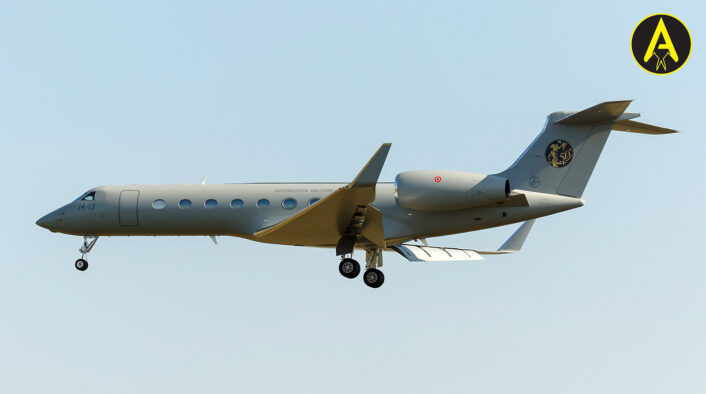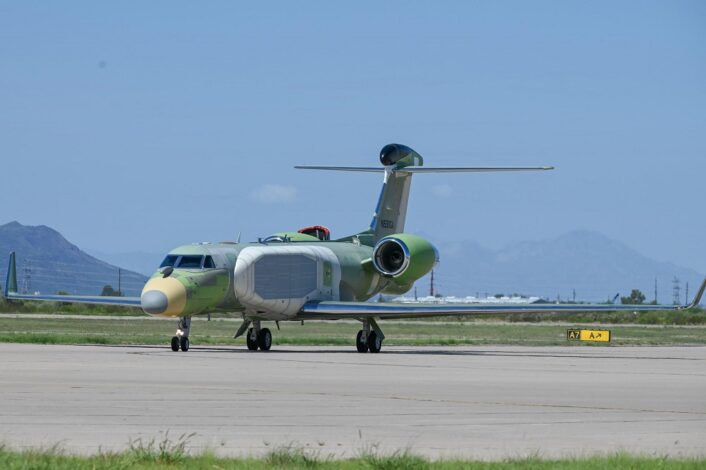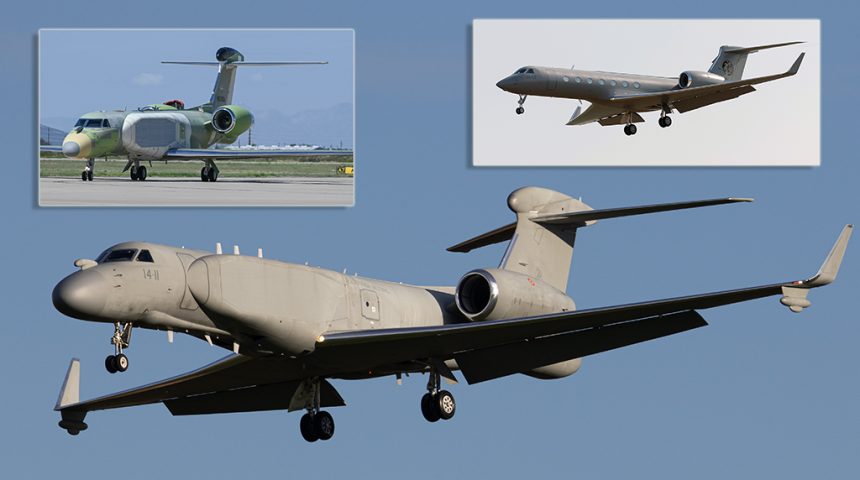Two “green” Gulfstreams will be equipped with the Compass Call mission system as part of the Joint Airborne Multi-Mission Multi-Sensor System program.
Italy is about to request to the United States government the acquisition of the Compass Call suite to equip two Gulfstream G-550 aircraft. The two aircraft are part of the P-MMMS (Piattaforma Multi-Missione, Multi- Sensore/Multi-Mission, Multi-Sensor Platform) program, aimed at obtaining a modern asset that can be integrated in a net-centric C4ISTAR architecture and later adapted for multi-domain operations.
As part of P-MMMS program, the Italian Air Force already acquired two G550 CAEW (Conformal Airborne Early Warning) aircraft. In 2020 the requirement for a new SIGINT (Signal Intelligence) aircraft emerged among those included in the Defense Policy Document for 2020-2022 (Documento Programmatico della Difesa 2020-2022), in the form of two JAMMS (Joint Airborne Multi-sensor Multi-mission System) aircraft.
The Italian JAMMS program is structured in more tranches: the first one, worth 1.2B Euro, covers the acquisition of the first two Full Mission Capable (FMC) aircraft and six “green” airframes that can be converted at a later stage to either JAMMS or CAEW configurations, together with logistic and infrastructural support. The Italian Air Force plans to operate a fleet of ten special mission modified G550s. The second one, worth 925M Euro, covers the modification of 4 out of 6 green airframes.

The first of two FMC aircraft was delivered last year, after the Foreign Military Sale from the US. All the new “green” aircraft lack some of the external ‘lumps and bumps’ and other apertures already appearing on other special-mission Gulfstream G550s, including the forward fuselage underside “canoe” fairing that should host the Leonardo Osprey 50 AESA radar.
Earlier this month, Italy’s Secretariat General of Defence / National Armaments Directorate (which is responsible for the procurement of materiel, equipment and weapon systems for the Italian Armed Forces) approved the Italian Air Force request to convert two of the green G550s, with options for a third, to the FMC Electronic Attack (EA) configuration as part of the second tranche of the program. The Directorate determined that the only solution capable of satisfying the requirements is the EC-37 being developed by the U.S. Air Force for the Compass Call Rehost program. This will require both a Direct Commercial Sale, for the acquisition of the components and the required modifications, and a Foreign Military Sale, for the acquisition of the mission systems and the ground control stations.
The preliminary document says that the works to modify the first two airframes could start as early as October 2023, and the cost for the modification is +167M Euro. The Italian MOD outlines a plan to invest in the EA variant, between 2023 and 2029, a total of +234M Euro (including all the related ground systems and support).

The determination confirms the info that was contained in the multiyear defense planning document (Documento Programmatico Pluriennale della Difesa) for 2022-2024. As we reported back then, under the Force Protection and Engagement Capability entry, the document hinted at the Electronic Combat variant of the P-MMMS stating “Completion of the acquisition program for new aircraft equipped for and dedicated to Electronic Warfare operations (EC-37B)”.
As you may know already, the Compass Call system is an airborne tactical electronic attack weapon system installed on a heavily modified version of the C-130 Hercules, called EC-130H Compass Call. This system disrupts enemy command and control communications, radars, and navigation systems and limits adversary coordination, which is essential for enemy force management. Following the type’s retirement announced in 2014, the U.S. Air Force initiated the Compass Call Rehost program, which will move the current Compass Call systems from the EC-130H to the new EC-37B, based on the Gulfstream G550 Conformal Airborne Early Warning Aircraft (CAEW) airframe.
The G550 has increased speed, endurance, and extended stand-off range over the legacy EC-130H aircraft, says L3Harris, providing significantly improved survivability, as well as providing improved stand-off jamming capability and flexibility to counter sophisticated communications and radar threats. The first EC-37s are currently being modified and Air Combat Command plans to field five aircraft by the end of the year, after the first tests of the fully modified aircraft equipped with the Compass Call system.
These first five EC-37B aircraft will host the current Baseline 3 variant of Compass Call, which will be “transplanted” from the retired EC-130Hs. The remaining aircraft are scheduled to receive the upgraded Baseline 4 variant currently in development, which will reportedly introduce a new low-band jammer system. It is not known which variant will be requested by the Italian Air Force and also which variant the US open will be open to provide.
Should the US Department of State approve the FMS, Italy would become the first foreign government to acquire the highly classified Compass Call system and the Italian Air Force would become one of the few operators to field a combat proven, state-of-the-art and highly effective Electronic Attack capability.
After the modification to the EC-37B “variant”, the G550 will externally be similar to the CAEW jets.









